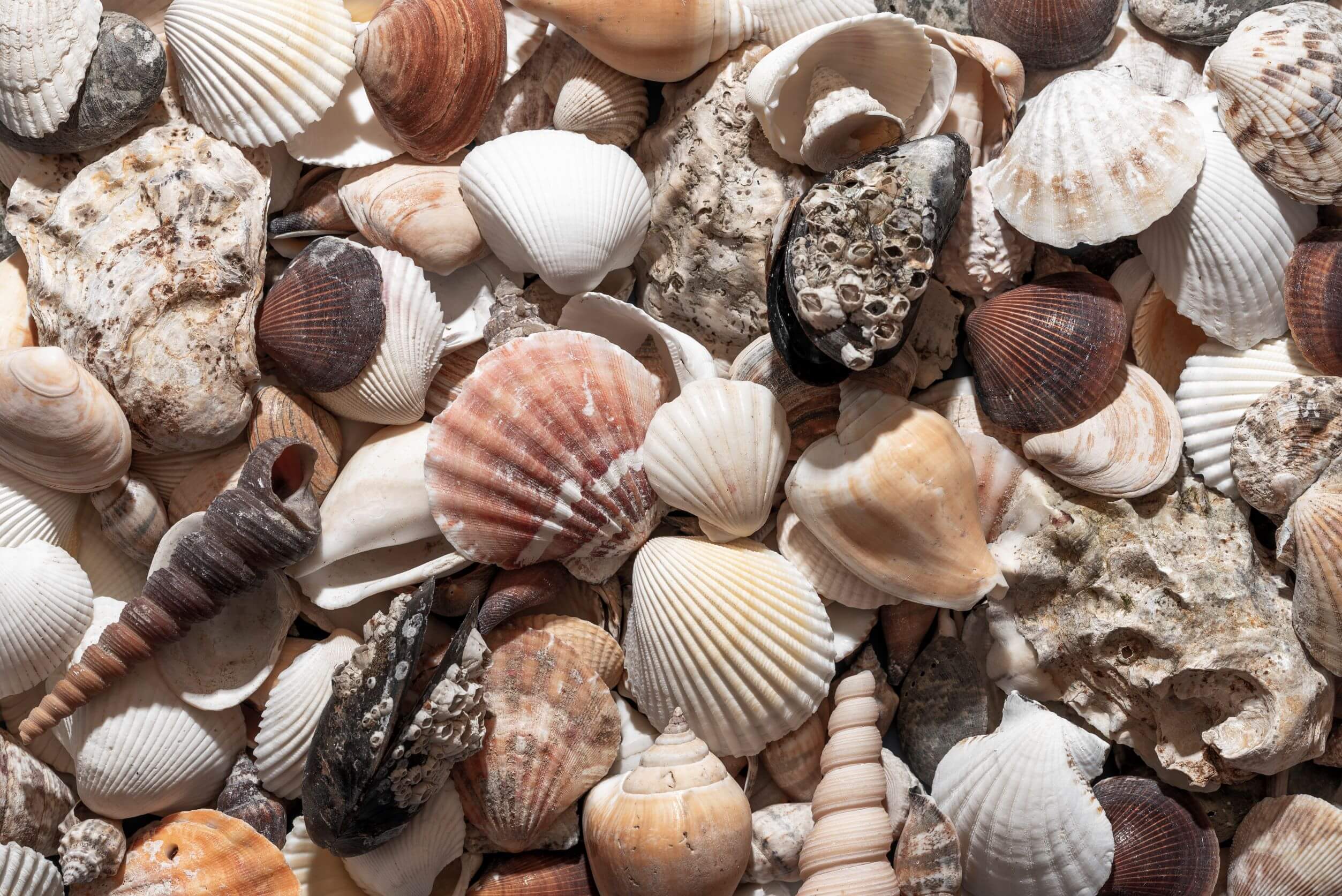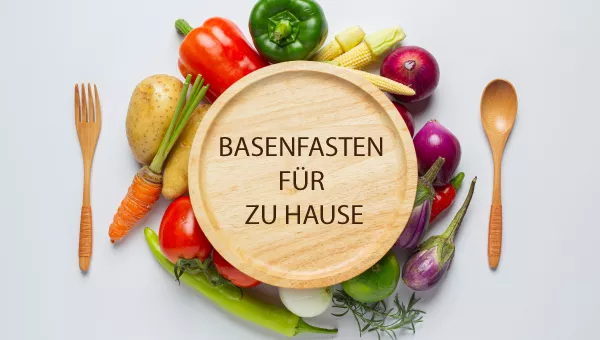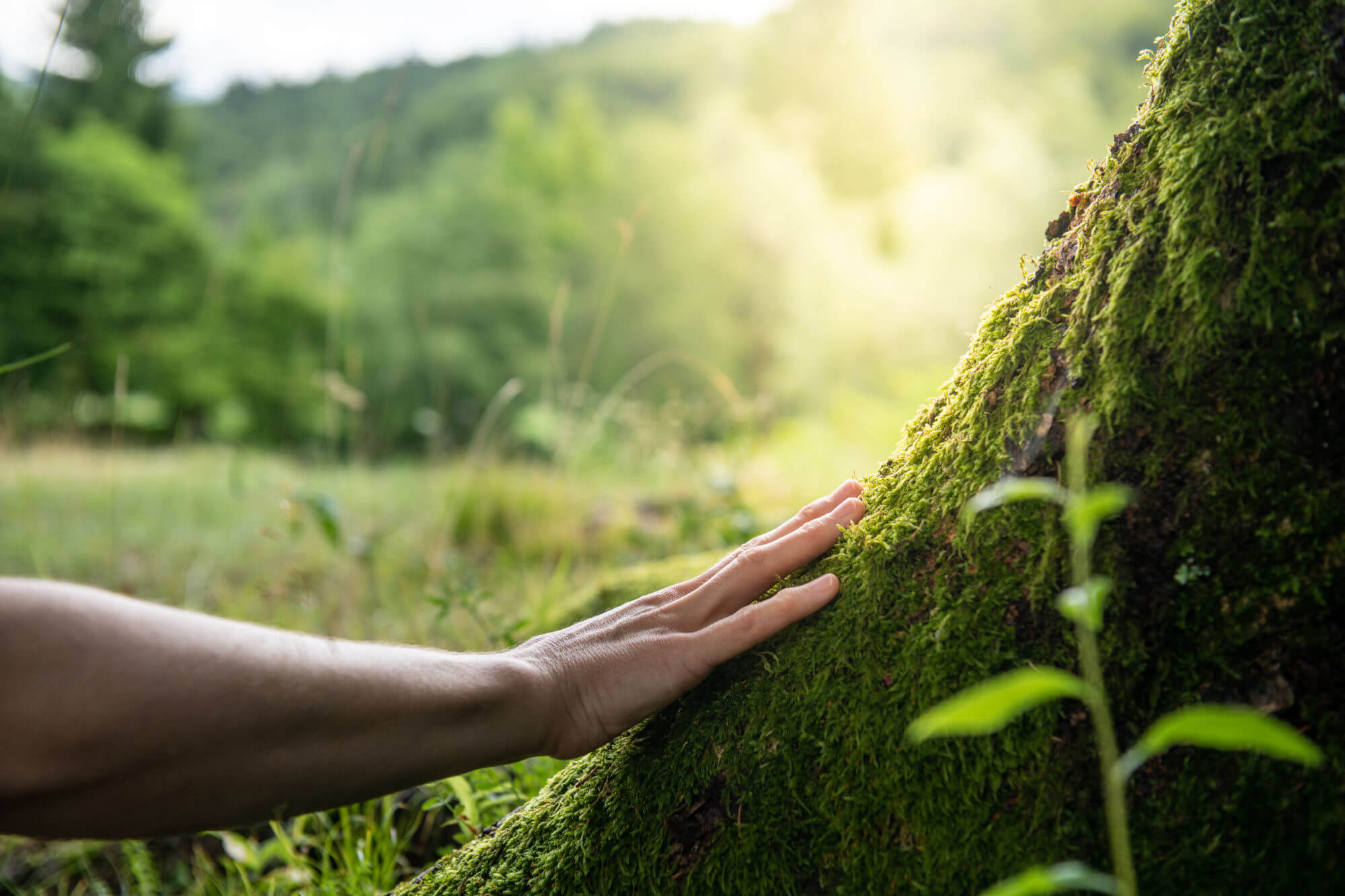02/06/2023
Antioxidants - natural protection for your cells
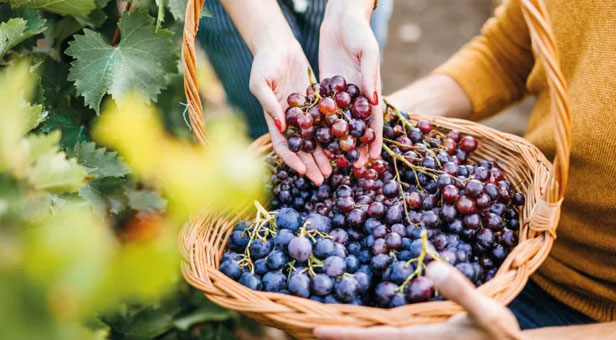
Antioxidants are on everyone's lips - in the truest sense of the word.
After all, we consume antioxidants with every berry, apple and cup of coffee.
But what are antioxidants anyway? What makes them so valuable? And which foods contain particularly high levels of antioxidants?
Learn about the world of antioxidants with us. We will show you how you can optimally utilise the potential of these protective substances for the benefit of your health.
What are antioxidants
From a chemical point of view, antioxidants are substances that protect other molecules from oxidation. In the body, they provide protection against "free radicals", reactive particles that can damage membranes and other cell structures and cause premature ageing of the skin.
Free radicals are produced naturally in your metabolism. Your body is well prepared for this and neutralises them with a sophisticated protection system. And this is where antioxidants come into play, acting as a kind of guardian against free radicals. They protect our cells, our cell metabolism and our health by generously donating their own electrons to free radicals, intercepting and neutralising them. This is why they are also known as "radical scavengers".
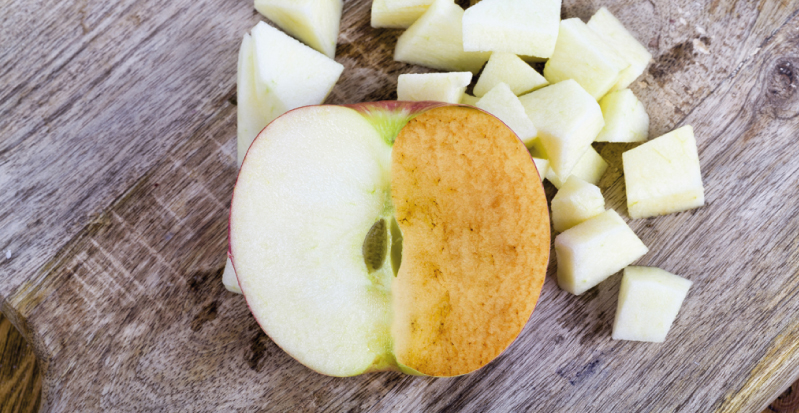
The apple test - how antioxidants work
You can see for yourself how antioxidants work by simply cutting open a piece of apple. Over time, the cut surface will react with the oxygen in the air (oxidation) and turn brown in colour. However, if you sprinkle a little lemon juice on the apple slice, it will retain its natural, light colour. This is because the lemon juice contains vitamin C, an important antioxidant.
Common antioxidants
Food, pharmaceutical and cosmetics manufacturers have also long recognised the benefits of antioxidants. By adding natural or synthetic antioxidants, they protect sensitive ingredients and thus ensure a longer shelf life for their products. The spectrum of added antioxidants ranges from natural vitamins C and E to synthetic gallates (E310-E312), phosphates (E339-E341) and sulphites (E221-E228) through to sulphur dioxide (E220), which can certainly harbour health risks. Sulphur dioxide, for example, not only ensures that dried fruit retains its bright colour, but can also trigger headaches, nausea, allergic reactions, etc. in sensitive people. You are on the safe side if you buy unsulphurised organic dried fruit.


How many antioxidants do we need?
How many antioxidants we need depends on many factors. The more free radicals are produced, the more antioxidants our body needs to maintain a healthy balance. People who spend a lot of time in the sun, are under a lot of stress, sleep little, smoke, drink alcohol frequently, take certain medications, are increasingly exposed to environmental toxins, do little exercise, fly frequently and far, have infections or suffer from chronic inflammation therefore have a particularly high requirement.
In all of these cases, more free radicals are produced in our body, which need to be neutralised. If this is not successful and too many free radicals accumulate in our body, "oxidative stress" occurs.
Ensuring a healthy balance is very simple: with a good and broad range of natural antioxidants. These work hand in hand with other antioxidants contained in the body by recycling each other and joining forces to ensure a good balance and the best possible cell protection. Therefore, it is not only the quantity, but also the variety and quality of antioxidants that matters.
But where do we actually get these protective substances from? Some, such as enzymes or hormones, can be produced by our body itself, most of them we take in through our food.
And this is precisely where our great opportunity lies: the more colourful, varied fruit, vegetables and other antioxidant sources we include in our diet, the more protective and health-promoting antioxidants will reach our cells.
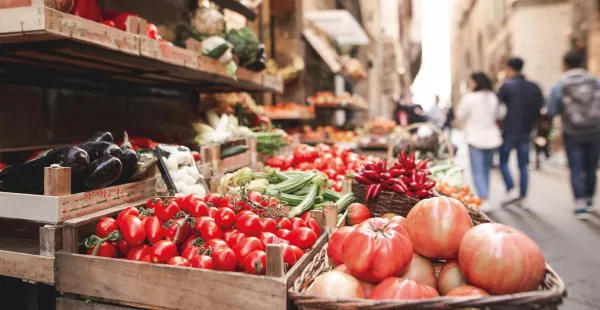
Welche Antioxidantien stecken in unserer Nahrung?
Unsere Nahrung bietet eine wahre Fülle an Antioxidantien. Neben Vitaminen und Spurenelementen gehören dazu vor allem „sekundäre Pflanzenstoffe“, die den Pflanzen als Schutz vor Umweltgiften, Krankheitserregern und Fressfeinden dienen und sie zugleich vor starken UV-Strahlen schützen. So wie Allicin, das Knoblauch, Zwiebeln und Lauch bei der Abwehr von Bodenparasiten und Pilzen wertvolle Dienste leistet.
Zu den antioxidativ wirksamen sekundären Pflanzenstoffen gehören zudem natürliche Farbstoffe wie Carotinoide und Polyphenole, die Blüten, Wurzeln, Beeren und anderen Früchten ihre charakteristische Farbe und zum Teil auch ihr typisches Aroma verleihen. Ein Beispiel hierfür sind Anthocyane, die für die kräftige Farbe vieler roter, violetter oder blauer Früchte sorgen, aber auch Polyphenole, die den kräftig-herben Geschmack von Kaffee, Tee und Aroniasaft prägen.
Which foods are particularly rich in antioxidants?
Nature offers a rich selection of foods that you can flexibly into your diet in order to protect your body from oxidative stress. These include many native Fruits, herbs, etc. The most important factors here are freshness and on what you eat, and less on how much you eat from it. For example, while a banana, light-coloured grapes and avocados contain comparatively few antioxidants, are fresh, crunchy blueberries, red grapes and broccoli true Antioxidant miracle.
We support you in your choice with an overview of the most important foods for antioxidant cuisine. Whether you are a lover of fresh berries or enjoy chocolate: Here there is something for everyone!
| Category | Food | Important antioxidants |
|---|---|---|
| Vegetables | Artichoke | Polyphenols (silymarin) |
| Aubergine | Polyphenols (anthocyanins, flavonoids) | |
| Broccoli | Sulforaphane, lutein, manganese, vitamin B2 and C | |
| Kale | Flavonoids, carotenoids, glucosinolates, lutein, zeaxanthin, manganese, vitamins B2 and C | |
| Carrots | Carotenoids | |
| Pumpkin | Carotenoids | |
| Mangold | Vitamin C | |
| Paprika (red) | Zeaxanthin, flavonoids, vitamin C | |
| Rosy cabbage | Sulforaphane, glucosinolates, vitamin C | |
| Beetroot | Polyphenols | |
| Red cabbage | Anthocyanins, glucosinolates, vitamin C | |
| Tomatoes | Flavonoids, carotenoids, vitamin C | |
| Spinach | Zeaxanthin, polyphenols, chlorophyll, vitamin C | |
| Sweet potatoes (especially red) | Carotionode, vitamin C | |
| Fruit & berries | Acerola cherries | Vitamin C |
| Apple | Flavonoids (quercetin, anthocyanins), carotenoids (including lutein), chlorophyll | |
| Aronia berries | Polyphenols | |
| Blueberries (especially wild) | Polyphenols (especially anthocyanins; quercetin), vitamin C, manganese | |
| Blackberries | Polyphenols (anthocyanins, flavonoids) | |
| Strawberries | Polyphenols (anthocyanins, phenolic acid) | |
| Goji berries | Polyphenols (including the phenolic acid ellagic acid), vitamin C | |
| Pomegranate | Polyphenols (including the phenolic acid ellagic acid) | |
| Grapefruit | Vitamin C | |
| Plums (red), damsons | Polyphenols (including resveratrol, flavonoids) | |
| Rose hip | Vitamin C | |
| Raspberries | Polyphenols (including anthocyanins, ellagic acid, resveratrol), vitamin C | |
| Elderberries/juice | Polyphenols (anthocyanins) | |
| Currant berries/juice | Polyphenols (including anthocyanins, resveratrol), vitamin C | |
| Cherries | Polyphenols (including anthocyanins, phenolic acid) | |
| Orange | Vitamin C | |
| Cranberries | Polyphenols (including anthocyanins, resveratrol) | |
| Seabuckthorn | Vitamin C | |
| Grapes (red) | Polyphenols (especially resveratrol - OPC; phenolic acid, flavonoids) | |
| White cabbage | Glucosinolates, chlorophyll | |
| Salads | Chicory | Polyphenols |
| Lamb's lettuce | Carotenoids, chlorophyll | |
| Lettuce (especially red) | Polyphenols, chlorophyll | |
| Portulaca | Carotenoids, chlorophyll, vitamins A and C | |
| Radicchio | Polyphenols (anthocyanins) | |
| Scented plants | Garlic | Sulphides (allicin) |
| Leek | Sulphides (allicin) | |
| Onions | Sulphides (allicin), flavonoids | |
| Pulses | Beans (small red, black) | Polyphenols (anthocyanins, flavonoids) |
| Kidney beans | Polyphenols (anthocyanins, flavonoids), zinc | |
| Lenses | Polyphenols, zinc | |
| Herbs & spices | Basil | Polyphenols, carotenoids (lutein, zeaxanthin) |
| Dill | Carotenoids | |
| Ginger | Polyphenols | |
| Coriander | Carotenoids (lutein, zeaxanthin), chlorophyll, vitamin C | |
| Caraway | Phenolic acid | |
| Turmeric | Curcumin | |
| Cloves | Polyphenols, essential oils | |
| Oregano | Polyphenols | |
| Parsley | Flavonoids, vitamin C | |
| Rosemary | Carnosol, carnosolic acid | |
| Sage | Carnosol, carnosolic acid | |
| Thyme | Polyphenols | |
| Cinnamon | Hydroxylanisole, Trolox, vitamin C | |
| Oils | Olive oil (cold-pressed) | Polyphenols, vitamin E |
| Olives (especially black) | Polyphenols, carotenoids, vitamin E | |
| Nuts | Hazelnuts | Polyphenols |
| Para nuts | Vitamin E, selenium, zinc | |
| Walnuts | Polyphenols, vitamin E, selenium, zinc | |
| Drinks | Elderberry juice | Polyphenols (anthocyanins) |
| Currant juice | Polyphenols (including anthocyanins, resveratrol) | |
| Coffee | Polyphenols (especially phenolic acids, flavonoids) | |
| Raw cocoa (in oat/rice milk) | Polyphenols, vitamin B2, manganese | |
| Red wine | Polyphenols (especially resveratrol - OPC; phenolic acids, flavonoids) | |
| Tea (green, black) | Polyphenols (especially phenolic acids, flavonoids) | |
| Grape juice (red) | Polyphenols (especially resveratrol - OPC; phenolic acids, flavonoids) | |
| Other | Cep mushrooms | Selen |
| Bitter chocolate | Polyphenols |
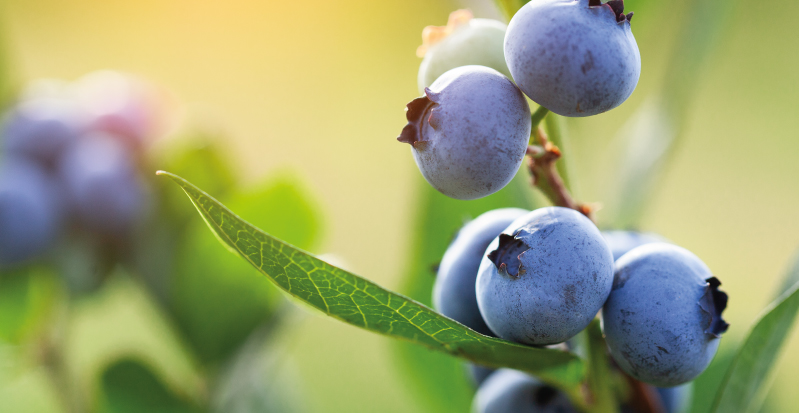
You can often ensure noticeably more antioxidants in your body by making small adjustments. Simply go by colour: The more colourful or darker, the more antioxidants you can expect. This applies to grapes, redcurrants and onions - red instead of white - as well as peppers (red), olives (black), sweet potatoes (red) and beans. Blueberries are a good example: Wild blueberries, with their deep dark-coloured interior, have a significantly higher antioxidant potential than cultivated blueberries, which are white on the inside.
No matter which food you choose: In any case, it is worth reaching for organic products, as they have been proven to contain more secondary plant substances.
If you are already eating a healthy diet but are not always able to get enough antioxidants from your food, for example due to intolerances or an increased requirement, high-quality nutritional supplements can help to create the desired antioxidant balance.
Well supplied with antioxidants - 18 tips for your antioxidant kitchen
- On average, plant-based foods contain 64 times more bioactive antioxidants than animal-based foods!
- The best choice is fresh, regional and seasonal food - organic or wild-collected, of course.
- Eat colourful food - dark, strong colours promise lots of antioxidants.
- Eat plenty of dark berries - these often contain lots of anthocyanins and other antioxidants. Out of season, frozen berries or organic juices are good alternatives.
- Prefer to enjoy berries, tea, cocoa and coffee without milk or cream - so that their antioxidants can be optimally absorbed and their positive effects can fully unfold
- When eating organic apples, pears, etc., eat the skin too - this is where you'll find the most antioxidants.
- Cook vegetables only briefly, preferably using steam - this preserves vitamins and antioxidants.
- After chopping, leave the broccoli to rest for 15 minutes, only then add the water and cook the broccoli gently - during the resting time, broccoli's own enzymes ensure the formation of sulforaphane, a valuable antioxidant in cabbage and other cruciferous vegetables.
- Prepare frozen Brussels sprouts with some rocket or fresh broccoli - this way you can conjure up more sulforaphane on your plate, even with frozen goods.
- Use herbs generously - they provide the right flavour and lots of antioxidants
- Garlic, onions and leeks - provide us with sulphides
- Enjoy organic citrus fruits with their peel, sea buckthorn, rosehip, peppers and cabbage - contain lots of vitamin C.
- Use high-quality, cold-pressed vegetable oils - they are natural sources of vitamin E.
- High-quality organic olive oil - protects blood lipids from oxidative stress with its polyphenols.
- Wholemeal products - provide more fibre, more minerals and more antioxidants
- Nuts - provide valuable omega fatty acids as well as polyphenols.
- Coffee, green tea, cocoa and red wine - as an antioxidant treat to drink.
- Dark chocolate - as a healthy sweet treat
Our most important food supplements with antioxidants
For special diets and in situations where your body requires more antioxidants, e.g. because you sleep too little, fly far, do too much sport or have a particularly demanding job, you can take additional antioxidants as a dietary supplement.
At hypo-A you will find a wide range of hypoallergenic food supplements with antioxidants. Just as nutrients and antioxidants always work together in our body, you will find many tried-and-tested nutrient combinations in our range that our consultant doctor Peter-Hansen Volkmann has developed based on scientific findings and his practical experience in naturopathy.
- Acerola zinc - combined with vitamin C from the acerola cherry and zinc, two important water-soluble antioxidants.
- Q10 plus vitamin C - popular antioxidant plus with natural vitamin C from the acerola cherry and coenzyme Q10 as natural ubiquinone
- Trace elements - with the three most important antioxidant trace elements - zinc, selenium and manganese - as well as chromium for the blood sugar level**.
- Selenium plus acerola vitamin C - antioxidant duo with selenium yeast and acerola powder containing vitamin C
- Vitamin AE + lycopene - with vitamin E as an important fat-soluble antioxidant as well as the vitamin A precursor ß-carotene and lycopene as natural colourings of fully ripe tomatoes that have been cooked for at least three hours.
If you have any questions about use and dosage, please contact us on +49 (0)451-307 21 21 or send us an email
* Vitamins B2, C, E, manganese, selenium and zinc help to protect the cells from oxidative stress. ** Chromium contributes to the maintenance of normal blood sugar levels
Literature
- Ambati RR, et al: Astaxanthin: Sources, extraction, stability, biological activities and its commercial applications - a review. Mar Drugs, 2014, 12 (1), 128-152
- Blascheck W: Wichtl - Tea drugs and phytopharmaceuticals. WVG, 6th ed. 2016
- Buscemi S, Corleo D, Di Pace F, et al: The effect of lutein on eye and extra-eye health. Nutrients, 2018, 18; 10 (9), 132
- Carlsen MH, Halvorsen BL, Holte K, et al: The total antioxidant content of more than 3100 foods, beverages, spices, herbs and supplements used worldwide. Nutr J, 2010, 22; 9:3
- Davinelli S, et al: Astaxanthin in skin health, repair, and disease: a comprehensive review. Nutrients, 2018, 10 (4), 522
- Flemmer A: Organic food. Sustainable shopping, healthy living. Humboldt, 2021
- nutritionfacts.org/video/antioxidant-content-of-3139-foods/ (accessed 28 February 2023)
- www.ugb.de/exklusiv/fragen-service/orac-wert/?antioxidantien-orac-wert (accessed 24 February 2023)
- Ito N, et al: The protective role of astaxanthin for UV-induced skin deterioration in healthy people-a randomised, double-blind, placebo-controlled trial. Nutrients, 2018, 10 (7), 817
- Michalsen A: Healing with nutrition. Eat better, fast easier, live longer. Insel publishing house 2019
- Pratap K, Majzoub ME, Taki AC, et al: The algal polysaccharide ulvan and carotenoid astaxanthin both positively modulate gut microbiota in mice. Foods, 2022, 16; 11 (4), 565
- Prior RL, Gu L, Wu X, et al: Plasma antioxidant capacity changes following a meal as a measure of the ability of a food to alter in vivo antioxidant status. J Am Coll Nutr, 2007, 26:2, 170-181
- Singh KN, et al: Protective effects of astaxanthin on skin: Recent scientific evidence, possible mechanisms, and potential indications. J Cosmet Dermatol, 2020, 19 (1), 22-27
- Sztretye M, et al: Astaxanthin: A potential mitochondrial-targeted antioxidant treatment in diseases and with aging. Oxid Med Cell Longev, 2019, 3849692
- U.S. Department of Agriculture. Oxygen Radical Absorbance Capacity (ORAC) of Selected Foods - 2007. Nov 2007

